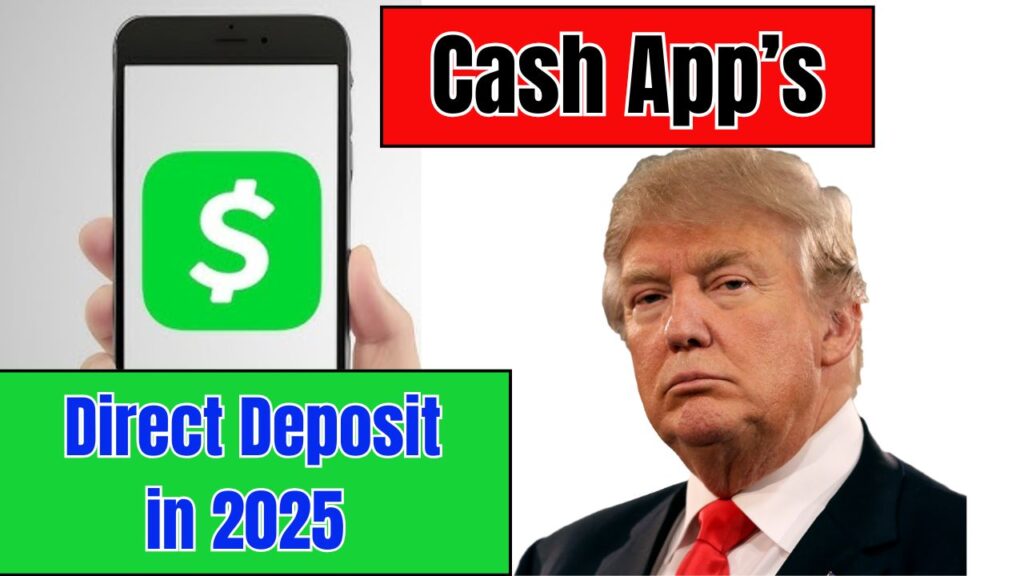Cash App Direct Deposit in 2025: In today’s fast-paced world, people are increasingly turning to technology that delivers instant solutions and simplifies their daily tasks. Cash App is one such fintech innovation that continues to reshape how users manage their money. The Cash App Direct Deposit in 2025 is not just a passing trend—it marks the beginning of a transformative era in digital finance. With just a few taps, users can send, receive, and access money instantly, making Cash App a top choice for individuals and businesses alike. As digital financial services become more personalized and convenient, the surge in Cash App direct deposit usage is revolutionizing the way transactions are made.
Cash App Direct Deposit in 2025
| Feature | Details |
| Article Focus | Cash App Direct Deposit in 2025 |
| Location | United States |
| Platform | Cash App |
| User Base | Individuals & Businesses |
| Category | Fin Tech / Financial News |
| Official Website | Cash App |
What is Cash App Direct Deposit?
Cash App is a popular U.S.-based digital wallet that allows users to send, receive, and store money securely from their smartphones. What sets Cash App Direct Deposit apart is its ability to process payments quickly, offering real-time access to funds a feature that’s rapidly attracting millions of users.
This feature allows you to receive your paycheck, tax refunds, or government benefits directly into your Cash App account without delay. With no deposit fees, high-speed transactions, and added security, Cash App has become a go-to platform for fast and hassle-free financial transactions.
Why is Cash App Direct Deposit in 2025?
Cash App’s massive growth in 2025 is driven by enhancements in technology and user-first features that provide a better transaction experience. Here are the top reasons behind this fintech boom:
1. Zero Transaction Fees
One of the biggest attractions is that Cash App doesn’t charge users for sending or receiving money through direct deposit. This fee-free convenience is a major factor in its rising popularity.
2. Faster Payments
Unlike traditional banks that take 1-2 business days to process direct deposits, Cash App delivers instant transactions. Payments land in users’ accounts in real-time—eliminating delays and improving financial flexibility.
3. Instant Access to Funds
Whether it’s your salary, tax refund, or any recurring payment, direct deposit via Cash App ensures you can use your money immediately. No more waiting for clearance or processing times.
4. Global Reach
Cash App now supports international transactions, allowing users to send and receive money across borders with ease. This global functionality makes it ideal for freelancers, remote workers, and digital nomads.
5. Top-Tier Security
Cash App invests heavily in security infrastructure. With end-to-end encryption, fraud detection, and secure sign-in, users can rest easy knowing their money and data are well-protected.
$697 Direct Deposit 2025 for All, Are you eligible for it? Fact Check, Eligibility and Payment Date
$1751 Food Stamp Payment for April 2025: SNAP Eligibility, Deposit Schedule, and Claim Process
Cash App Class Action Payment – Get $2500 before this Date
Important Features of Cash App in 2025
Cash App continues to evolve, offering a suite of features designed to meet the modern user’s financial needs:
- Peer-to-Peer Payments: Instantly send or receive money from friends, family, or clients.
- Direct Deposit Setup: Get your government payments, salaries, and refunds directly into your Cash App account.
- Investing Options: Easily invest in stocks or Bit coin within the app—perfect for beginners and experienced investors.
- Cash Card Integration: Link your Cash App card for purchases or ATM withdrawals.
- Cash Boosts: Enjoy exclusive discounts and cashback from partnered merchants when using the Cash Card.
CONCLUSION: Cash App Direct Deposit in 2025
With its user-friendly interface, lightning-fast transactions, and commitment to security, Cash App is setting new standards in the digital payment space. The is more than just a spike in usage—it reflects a fundamental shift in how users prefer to handle their finances.
